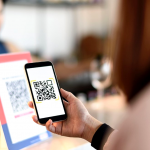Researchers believe that a mobile communications frequency could be the next level of technology after 5G. This information is provided for those who are curious about the existence of higher levels of technology. The new technology has been given the name “beam-steering,” and it is inaccessible to technological capacities that are already available.
Explore the Contents
University of Birmingham Scientists Find Faster Speeds than 5G
Researchers from the University of Birmingham in the United Kingdom were the ones who broke the news about the new technology and stated that it is impossible to gain access to it using the capabilities that are already available. According to the scientists’ explanation, the “beam-steering” technology is capable of reaching speeds of up to 10gbps.
According to the story by Sci Tech Daily, the feature comes with a significantly increased bandwidth, which may be beneficial for speed; however, this also implies that it will not be compatible with any and all devices. As this publication goes to press, the most cutting-edge technology that is now accessible is 5G technology, which is only now beginning to be made available to the general public.
Researchers Say New Technology can Increase Efficiency of Data Transmission Beyond 5G
According to the researchers from Birmingham, the new technique has the potential to increase “the efficiency of data transmission for beyond 5G.” This opens up a wide variety of mobile communications frequencies that are currently unavailable due to the limitations of existing technologies.
As per experimental results shown at the 3rd International Union of Radio Science, continuous wide-angle beam steering is available with this apparatus’s capabilities. This indicates that a mobile phone user who is moving can be followed in a manner analogous to how a satellite operates.
High Speeds Require a Mechanically Steered Antenna
When it came to the effectiveness of data transmission for other technologies like 5G and 6G, the researchers from the University of Birmingham School of Engineering were able to uncover the significant difference between the two.
However, it was discovered that the high speeds were only doable by employing antenna solutions that were mechanically directed. Dr. James Churm, Dr. Muhammad Rabbani, and Professor Alexandros Feresidis, who is the Head of the Metamaterials Engineering Laboratory, were the ones who were responsible for the development of the beam-steering technology.
The device found to be the size of an iPhone
According to reports, the gadget is around the same size as an iPhone and is constructed out of metal sheets with micro-measured holes. The group is still working on creating and testing the prototype for higher frequencies, and the antenna on the device is intended to control the radio wave deflection.
According to Dr. Churm, their system apparently has the potential to achieve an efficiency of 94 percent when operating at 300 GHz. This technology has the potential to be implemented in a variety of contexts, such as vehicle-to-vehicle communications, vehicular radar, vehicle-to-infrastructure communications, and satellite communications, as detailed by Mirage News.
Read Also: 20 Best Features of 5G Mobile Phones: You Must Know
Adoption to Higher Internet Speeds
An application for a patent concerning the beam-steering antenna tach has already been submitted by University of Birmingham Enterprise. In addition to this, they are searching for possible industry partners in the areas of product development, licensing, and collaboration.
Since the majority of people are still using 4G technology and 5G technology is still in the process of being adapted, the introduction of a technology that is even quicker in terms of mobile connection might help boost speed if it were implemented in a mainstream context.



